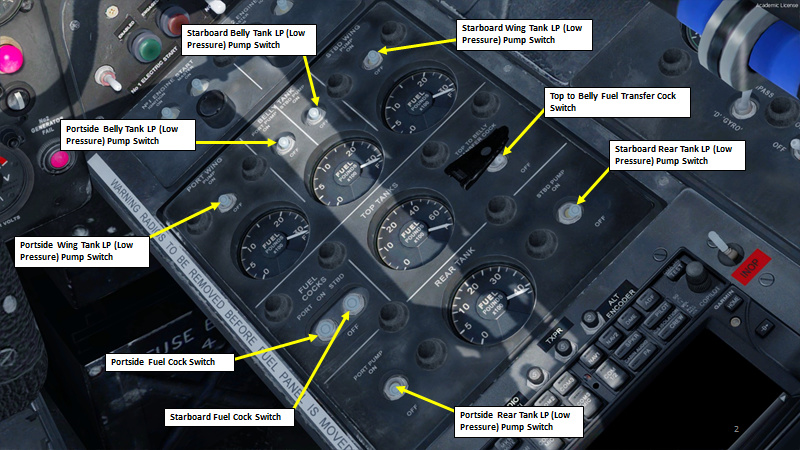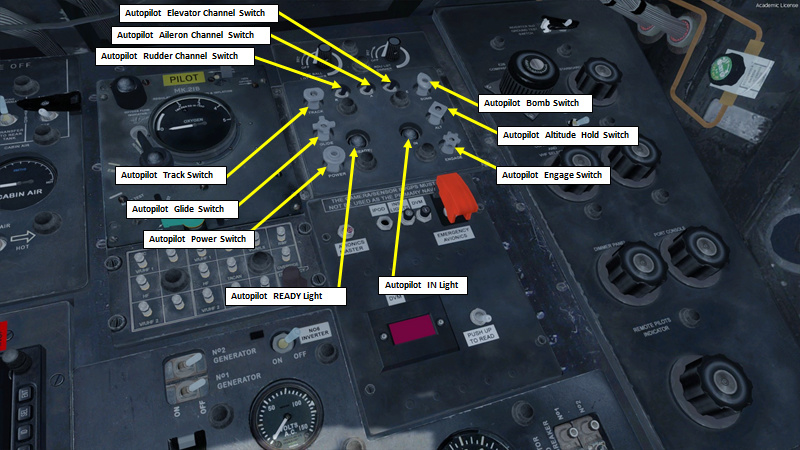Eighth entry for the Christmas Challenge.
Panama to Columbia, this time.

Click to reveal AAR
This time, I’m going solo in Just Flight’s English Electric Canberra PR.9.
That’s one sexy plane. A bit uncomfortable for the navigator though.
I scribbled a couple of notes to get me going.
Setting my throttles to OFF
Exploring the electrical panel
Checking fuel tank layout before refueling to 18,000 lbs
Ready for engine start
Better make sure I don’t forget these fuel cocks as well (So many cocks!).
Good start!
Gotta run through some last checks again.

Finally ready for taxi
Entering the flight plan

Ready for takeoff
Recommended procedure for takeoff:
Takeoff:
Except under conditions of operational necessity, limit take-off thrust from each engine to 90% RPM.
Climb:
If a sustained climb is intended, allow the speed to increase to the full throttle safety speed (170 knots) then set climbing RPM and increase to climbing speed. For circuit practice it is recommended that the speed be kept below 220 knots. For the climb to circuit height, 80% RPM is more than enough.
I take a deep breath and start throttling up to 90 % RPM
Unstick speed should be somewhere around 130 kts

These Avon Mk 206 engines are powerful as hell
Climbing like a rocket
Overflying Tocumen
Climbing some more
Lots of clouds
Notes on Autopilot
- After engine start, ensure flaps are UP and No. 2 inverter has cut in before starting checks on AP
- Pull on the POWER switch and check that the READY indicator shows black/white stripes after approx. 1 min
- Switch IN rudder (set to RIGHT), aileron and elevator channel switches
- Ensure trim indicators are within white sector and trim the aircraft to fly hands and feet off in the required flight attitude
- Pull ON the ENGAGE switch and note that the IN indicator shows white and the READY indicator black.
- CLIMB/DESCENT: disengage the ALT switch, move PITCH control to achieve necessary pitch.
- ALTITUDE LOCK: When flying straight and level, engage the ALT (Altitude Lock) switch.
- TURNING: Use PRE-SELECT TURN ENGAGEMENT button on the compass repeater
- To disengage, set ENGAGE switch to OFF, then push OFF the POWER switch.
Autopilot ready (POWER Knob pulled, READY light hatched)
Autopilot Engaged (ENGAGE knob pulled, IN light white)
To control heading, we set the desired heading with the Autopilot Heading Setting knob, then we press the Pre-select Turn Engagement button.
We control Autopilot pitch with a small DIVE/CLIMB switch.
I think I finally got this autopilot thing figured out.
Reaching 25,000 ft. Let’s see if we can make it to 42,000 ft. I hear the Canberra PR9 we have can get up to 48,000 ft!
So far so good
Some data on fuel. Better keep an eye on those fuel gauges.


Reaching 34,000 ft
Flying over the Reserva Forestal Punta Patino, I can barely hold 38,000 ft. However, that might be because I’m very heavily loaded on fuel and unwilling to push the engines past 90 % RPM.
The beginning of the Andes Mountain Range is completely covered with clouds
A little looksie at the GPS
Over Medellin
So many clouds
Approaching Cordillera Oriental
Starting my descent, deploying some funny-looking airbrakes on the wings
Diving into the soup
Rio Magdalena. Catching some light rain on the way
Starting the approach. I gotta be careful: Bogota is about 8350 ft high.
Those are some really terrible conditions now that I think about it…
I tune my ILS frequency to 110.7 (Runway 13R)
Aaand… there’s a signal! Yes! Let’s hope I can remember my ILS approaches in the VEAO Hawk.

Crew-only being approx. 29,000 lbs,… with approx. 13,000 lbs of fuel remaining… that gives about 42,000 lbs total, which gives a threshold speed of about 105 kts. Approach speed is threshold speed + 15 kts, so 120 kts.
Oh my god… am I really gonna land into THAT?
I keep saying “8350” out loud to remind myself that the airport is at that altitude. I need to be exceedingly careful since the runway is on top of a very steep cliff. Coming in too low means crashing into the mountain.
I also need to be extra careful to land as smoothly as possible. The landing gear on this plane is really, reaaaally low. A tail strike is certainly possible if I try to flare.
Runway in sight
(Clenching Buttocks)
I’ve got to be butter smooth on that one
Touchdown
Wow… I did it! I can’t help but feel an exhilarating sense of accomplishment.
Taxiing
There we are. We have finally arrived to El Dorado Airport in Bogota, Colombia.
Shutting down engines




























































